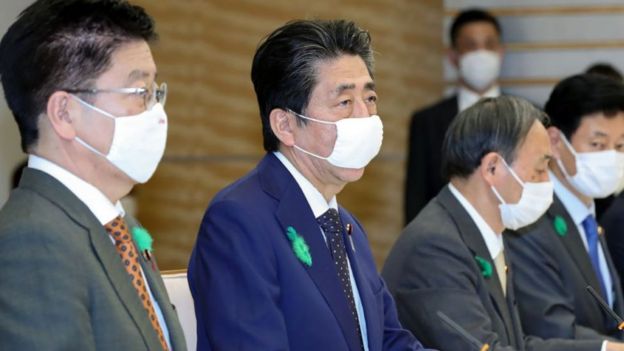Live Streaming
Program Highlight
Company Profile
Coronavirus: Japan Declares Nationwide State of Emergency
Written by Ani Hasanah
Prime Minister Shinzo Abe, centre, declared the state of emergency at a special meeting of medical experts (BBC)
The move allows regional governments to urge people to stay inside, but without punitive measures or legal force.
The state of emergency will remain in force until 6 May.
Prime Minister Shinzo Abe had previously declared a month-long state of emergency in seven regions.
Speaking at a special meeting of medical experts, Mr. Abe said: “Areas, where a state of emergency should be carried out, will be expanded from the seven prefectures to all prefectures.”
As the number of infections in Japan has increased, criticism of Mr. Abe’s response has grown louder.
One poll shows 75% of people think the prime minister took too long to declare a state of emergency in Tokyo.
After a recent spike in cases in the capital Tokyo, experts warned that the city’s emergency medical facilities could collapse under the pressure. Officials in Tokyo have also urged people to work from home.
After the initial state of emergency came into force on 8 April, a number of other regional governors called for the measures to be extended to their areas, saying that cases were growing and their medical facilities were overwhelmed.
Japan’s two emergency medical associations also issued a joint statement warning that they were “already sensing the collapse of the emergency medical system”.
And the mayor of Osaka appealed for people to donate their raincoats, so they could be used as personal protective equipment (PPE) for health workers whom he said were being forced to fashion PPE out of rubbish bags. (BBC)
Latest from Ani Hasanah
- Karisma Event Nusantara 2024 Seeks to Increase Tourism Sector Income
- Two winners of the 2024 National German Language Olympiad to Represent Indonesia at the International Level
- Visa Free Visits as Government's Effort to Create Quality Tourism
- Dutch Ambassador: The Netherlands and Indonesia are Strong Partners
- Dutch Ambassador: The Netherlands and Indonesia are Strong Partners



